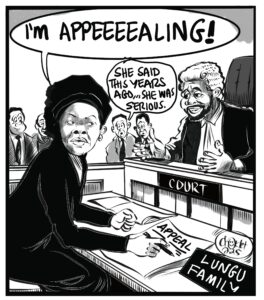University of Zambia senior lecturer in charge of livestock and animal health economics Chisoni Mumba has challenged ZNFU to substantiate its calls for the Food Reserve Agency (FRA) to revise the maize buying price.
FRA has pegged government’s buying price of a 50kg bag of maize at K110, but the Zambia National Farmers Union (ZNFU) has argued that the price is not enough because the private sector is buying at K140 per 50kg bag of the same white maize.
But in an interview, Dr Mumba argued that both FRA and ZNFU were not giving the actual estimated cost of producing a 50kg bag of maize, making their debates shallow.
“My problem is that both FRA and ZNFU are not really giving the cost of production for a 50kg bag of maize. Of course FRA talked about the cost involved and so forth, but they are not telling us to say ‘based on this, we have arrived at K110’. Maize production was subsidized by government, so that K110 is not the actual price, the actual price could be maybe K160 or K170 if you factor in the subsidy because the subsidy is like a revenue. So ZNFU was supposed to come across and say ‘according to our economic model, the cost of production for a 50kg bag for example is K70 and since it’s K70, for FRA to go and buy from these people, they have to buy the maize, they have to fumugate it, they have to package it, they have to transport it and therefore, the cost will be this much’. Then you can argue based on numbers. But right now, both sides are not arguing based on numbers, they are simply telling us that they do not know the cost of production. If they know, they are hiding it and you know maize is a political crop really,” Dr Mumba said.
“For us to be helped as a nation, we have to understand the cost involved. How much is required to produce a 50kg bag of maize. So I just want to mention a few costs involved in the maize production. I was looking at the productivity also because we are talking about productivity also. If we give the FRA package that is given where they give a farmer four bags of fertilizer and one 10kg bag of seed and the farmer is only to pay K400…then we need to factor in how much of this subsidy, because it’s a subsidy to the farmer, the government is subsidizing the farmer. So if we have subsidized this production, I think both ZNFU and FRA have enough capacity or expertise to do the costing to say the 50kg bag of maize, of course factoring in productivity… because the main problem that we have now is productivity, the farmers are not producing what they are supposed to produce. So if for example we were told that one hector worth of these inputs that are given, a farmer is supposed to produce 40 by 50kg bag of maize then we should actually have a figure to say this is how much we have subsidized a bag.”
Dr Mumba urged ZNFU to remove emotions and debate based on economic principle, insisting that the price that had been set by FRA was a good deal for farmers.
“The private sector is not involved in subsidizing, that we know, they just go there and buy from the farmers. So they can buy at K140 and FRA buys at K110, but don’t forget that FRA is government and government already subsidized production. So we are simply saying FRA is buying at K150, which is actually factoring in all the cost involved like transportation of maize, fumigation and storage, which is quite expensive to store that maize. So for me really, the K110, I will sound a bit controversial but the K110 per bag is a good deal for the farmer because you can’t tell any farmer in this country has actually produced a K50kg bag of maize at more than K60, that even if I do not have figures now in place, I can refuse. So I would estimate the cost of production of one bag to somewhere around K50 to K70,” said Dr Mumba.
“So for FRA to come and buy at K110, this margin of almost K50 is quiet something good for the farmer and I think we also shouldn’t forget here that what is causing this price is basically the market forces. We know that there was drought in Southern, Central, Western and Lusaka Provinces, so we have less supply. Since we have less supply, it’s known that when you have less supply the prices tend to go up because demand seems to be more. So we have more demand and less supply. So I think K110 is a good deal for the farmer, unless we are just arguing for the sake of politics and trying to show that we are protecting the farmer here but we are not actually protecting the farmer.”
























